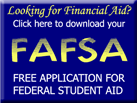
 |
|
|

|
Content provided by the Catalog of Federal Domestic Assistance
93.587 Promote the Survival and Continuing Vitality of Native American Languages FEDERAL AGENCY: ADMINISTRATION FOR CHILDREN AND FAMILIES, DEPARTMENT OF HEALTH AND HUMAN SERVICES AUTHORIZATION: Native American Programs Act of 1974, as amended, Public Law 93-644, 88 Stat. 2324, 42 U.S.C. 2991b; Native American Languages Act of 1992, Public Law 102-524, 104 Stat. 883.
To provide financial assistance to eligible applicants for the purpose of assisting Native Americans in assuring the survival and continuing vitality of their languages. Grants are provided under the following two categories: Category I Planning Grants are limited to 12 months and are used to conduct the assessment and planning needed to identify the current status of the Native American language(s) to be addressed and to establish community long-range language goals; Category II Design and/or Implementation Grants are limited to 36 months and allow communities to design and/or implement a language program or programs that will contribute to the achievement of the community's long-range language goal(s), and to accommodate where the Tribe or community is in its long-term language goals continuum. TYPES OF ASSISTANCE:
USES AND USE RESTRICTIONS: Funds may be used for language preservation and enhancement. ELIGIBILITY
REQUIREMENTS: Applicant Eligibility: The following organizations are eligible to apply; Federally-recognized Indian tribes (as listed by the Bureau of Indian Affairs in an October 21, 1993 Federal Register notice); Incorporated Non-Federally recognized Indian tribes; Alaska Native villages as defined in the Alaska Native Claims Settlement Act (ANSCA) and/or nonprofit village consortia; Nonprofit Alaska Native Regional Associations with village specific projects; Nonprofit Native organizations in Alaska with village specific projects; Incorporated nonprofit multi-purpose community-based Indian organizations; Urban Indian Centers: Public and nonprofit private agencies serving Native Hawaiians; National or regional incorporated nonprofit Native American organizations with Native American community-specific objectives; Public and nonprofit private agencies serving native peoples from Guam, American Samoa, Palau, or the commonwealth of the Northern Mariana Islands (The populations served may be located on these islands or in the United States.); and Tribally Controlled Community Colleges, Tribally Controlled Post Secondary Vocational Institutions, and colleges and universities located in Hawaii, Guam, American Samoa, Palau, or the commonwealth of the Northern Mariana Islands which serves Native American Pacific Islanders.
Pre-application Coordination: None. This program is excluded from coverage under E.O. 12372. ASSISTANCE CONSIDERATIONS: Formula and Matching Requirements: This program has no statutory formula for distribution of funds. A matching share of 20 percent is required unless waiver is requested in accordance with criteria which are also published in 45 CFR, Part 1336.50. POST ASSISTANCE REQUIREMENTS: Reports: Semi-Annual Financial Status Reports, Report of Federal Cash Transactions, Project Progress Reports, and an Annual Evaluation Report are required. FINANCIAL INFORMATION: Account Identification: 75-1536-0-1-506.
In fiscal year 2001, 62 new grants supported a wide range of activities including, but not limited to: collection of data on current language use; development of long-range language goals/strategies; development of specialized curricula; development and or expansion of language training programs; development of master/apprentice training programs; establishment of language immersion camps; compilation and transcription of oral narratives for uses such as development or revision of dictionaries and curriculum; and incorporation of language learning into tribal Head Start programs. It is anticipated that 37 grants will be awarded in fiscal year 2002 and 37 grants in fiscal year 2003. REGULATIONS, GUIDELINES, AND LITERATURE: Regulations are published in 45 CFR 1336. INFORMATION CONTACTS: Regional or Local Office: Not applicable. EXAMPLES OF FUNDED PROJECTS: Not applicable. CRITERIA FOR SELECTING PROPOSALS: Specific criteria for selecting proposals for funding are stated in each program announcement. In general, proposals are judged on the basis of relevance to program objectives as stated in the program announcement, project viability, community support, reasonable cost estimates, and qualifications of applicant organization and personnel.
|
| ||
|
State Money
|
Federal Money
|
Private Money
|
Low Cost Colleges
|

|